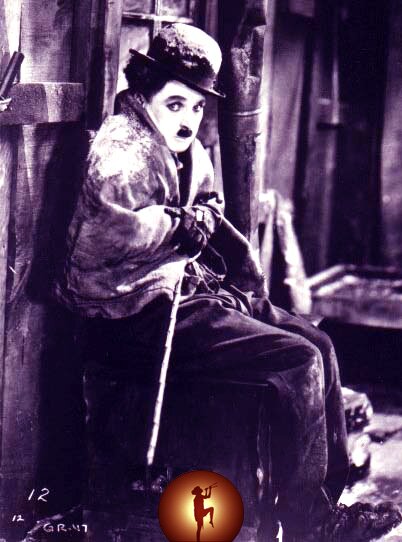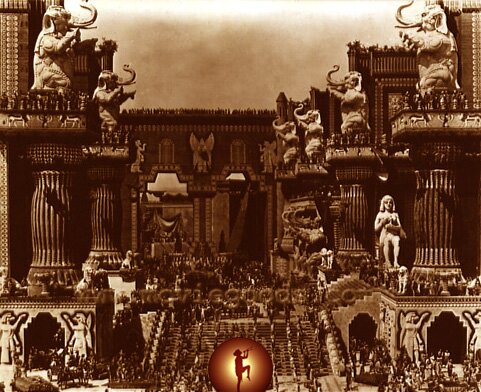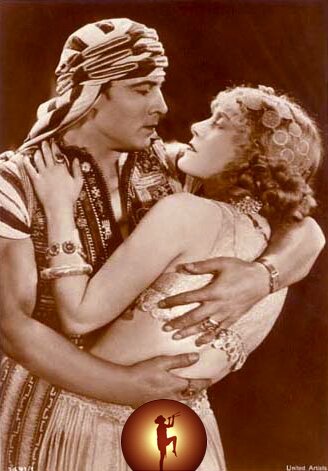|
September 30, 2006 The Silent Years Depending on where and when you grew up, you might have found that silent films were not always as readily available as they are today. From the time I was a child I loved the silent film but the opportunities to view them were few and far between. At that time every silent film experience was memorable for me and one of the best was the television series entitled THE SILENT YEARS. I'm sure many of you remember this excellent program. The films were shown weekly throughout the summer and each was introduced by Orson Welles. I remember sitting on the floor before the television set, eagerly awaiting Welles' appearance each week. And when he spoke I felt as though I was listening to a great teacher who would have been addressed as "Master" or some such term of respect. I would watch this bearded sage smoking his cigar in between his words of wisdom. I had not yet seen CITIZEN KANE but it was obvious to me that this man was truly great. The first film in the series was THE GOLD RUSH and it was the first silent feature film I ever viewed. What an auspicious beginning! I was literally rolling on the floor with laughter as I watched Charlie dancing with the rope that served as dog leash tied around his waist. And I thought Mack Swain was hilarious.
Charles Chaplin in THE GOLD RUSH (1925)In future weeks I saw stars whom I had only read about prior to that time. I couldn't believe I was actually going to see the Gish sisters when ORPHANS OF THE STORM aired. And the added bonus was to see a film directed by the great D.W. Griffith. I had always liked the silents but now the gates of a new world were opening before me for the first time. And beyond those gates it was very sunny indeed. Throughout the season I saw Lon Chaney, Doug Fairbanks, John Barrymore, Buster Keaton, Mabel Normand, W. C. Fields and Rudolph Valentino. It really seemed that it couldn't get any better than this—but there was yet another bonus. The series was sponsored by a bank in New York City and they were offering free posters of the silent stars—one poster for each film shown. I couldn't believe they were actually giving them away for free. They didn't even ask for the postage. I wrote out a request and mailed it off. I expected them to ignore me because they were a bank in NYC and I was just a kid in Connecticut who wasn't likely to need their services anytime soon. But shortly afterward the posters arrived in the mail. They all had the same look to them—and they looked great. I went straight to my room and began putting them up—Chaplin, the Gish sisters, Keaton, Chaney, the set from Intolerance, etc. Man, my room never looked so good. It seemed to me as though the lights had just been turned on for the first time. From that point forward the first images I saw every morning when I awoke were the Gish sisters, Mabel, Chaplin and Lon Chaney. I considered each film in the THE SILENT YEARS series to be a gem but there was a small problem. My family lived in Connecticut and the series was shown on WNET from New York. We had fairly good reception in those days but tended to lose WNET in the evenings. Some nights it lasted longer than others depending on the weather. So I saw the beginning of every film but somewhere along the way the picture would get snowier and snowier until... well, you know. The audio usually remained however. So once the film got going I would typically find myself sitting in front of a screen full of noise listening to one of William Perry's silent film scores. I really liked Mabel Normand and had very much looked forward to viewing THE EXTRA GIRL. But the television reception was so poor that evening that I didn't get much further than Welles' introduction. However I was able to see Mabel cutting the onions through the noise before everything went completely snowy. That image with the onions stayed with me for a long time afterward as I tried to imagine what the rest of the film looked like.
D. W. Griffith's INTOLERANCE (1916)And then there was a second problem. About the time the reception would begin to fade, members of my family would come into the living room. And it might surprise you to learn they didn't share my appreciation of the silents. The networks were showing either sitcom reruns or summer replacement series, and THE SILENT YEARS would inevitably be turned off despite my protests. Man, I hated those sitcoms. I especially remember the friction that occurred the night INTOLERANCE was shown. The picture was fading in and out as the family members came into the room. They asked what I watching and I told them. "But you can't even see it," they argued. "I'm trying to see it if you'll be quiet and let me watch." "What is it about?" "I don't know. Orson Welles said nobody really knows what it's about." Well as you might imagine that argument didn't do me much good. They all joined in loudly and decided that the majority wanted to change the channel. And so the channel was changed and that was the end of INTOLERANCE. I was extremely upset about that. It was early in THE SILENT YEARS series and I began to realize that I was not going to be able to see these great films after all. At best I would only see the beginnings of them. I also began to think I would never have the opportunity to see any of these films again... It was literally years before I did get another opportunity to see them. Through those years the posters served as a reminder of what I was missing—the Gish Sisters, Fairbanks, Mabel with Keystone Teddy...I saw their images daily even when I was thinking about other things. I often think about THE SILENT YEARS series and the conditions under which I viewed my first silent features. And I am especially reminded of this when I hear people complain about the picture quality of duped prints or the limited availability of silents in general. When TCM announced they would be showing a still reconstruction of LONDON AFTER MIDNIGHT a few years back, there were some people who misunderstood the announcement and thought TCM would actually be showing the film. And to my amazement there were some who immediately positioned themselves to complain about it by stating they hoped TCM had gotten it right and that the picture quality would be good and there would be no missing scenes, etc... I cannot begin to fathom where this lack of appreciation comes from. It reminds me of the line in the Joni Mitchell song, "Don't it always seem to go that you don't know what you've got till it's gone..." And apparently, as in the case of LONDON AFTER MIDNIGHT, some don't know what they've got even after it's gone. THE SILENT YEARS always brings such issues to mind because of the conditions under which I first viewed the series. And these memories will always prevent me from taking the silents for granted. Sometimes there seems to be a tendency to dismiss the films that are readily available because we have already seen them. I still go back to them periodically and remember how it felt the first time. I no longer sit on the floor when I watch them but I still feel the wonder. The feeling is comparable to how one might feel today if he were about to view LONDON AFTER MIDNIGHT or CLEOPATRA with Theda Bara. It is a feeling that was there from the start and will be there to the last. For better or worse the sitcoms are not lost and they typically have good picture quality. But for my part I will always consider the silent years to be a much better alternative than the network television years. And the silent years are the ones I will always remember most fondly.
Rudolph Valentino & Vilma Banky in SON OF THE SHEIK (1926)THE SILENT YEARS THE GOLD RUSH (1925) - Charles Chaplin |
|
|



